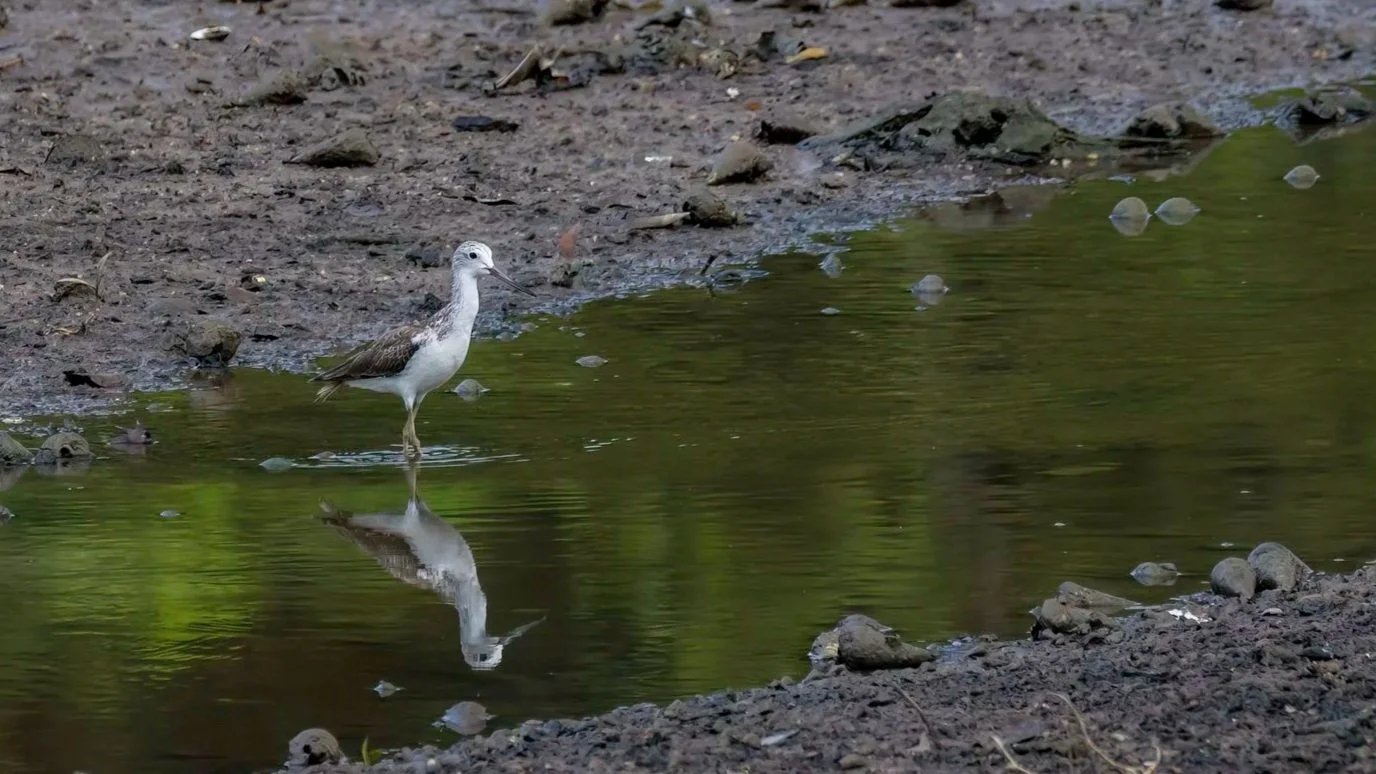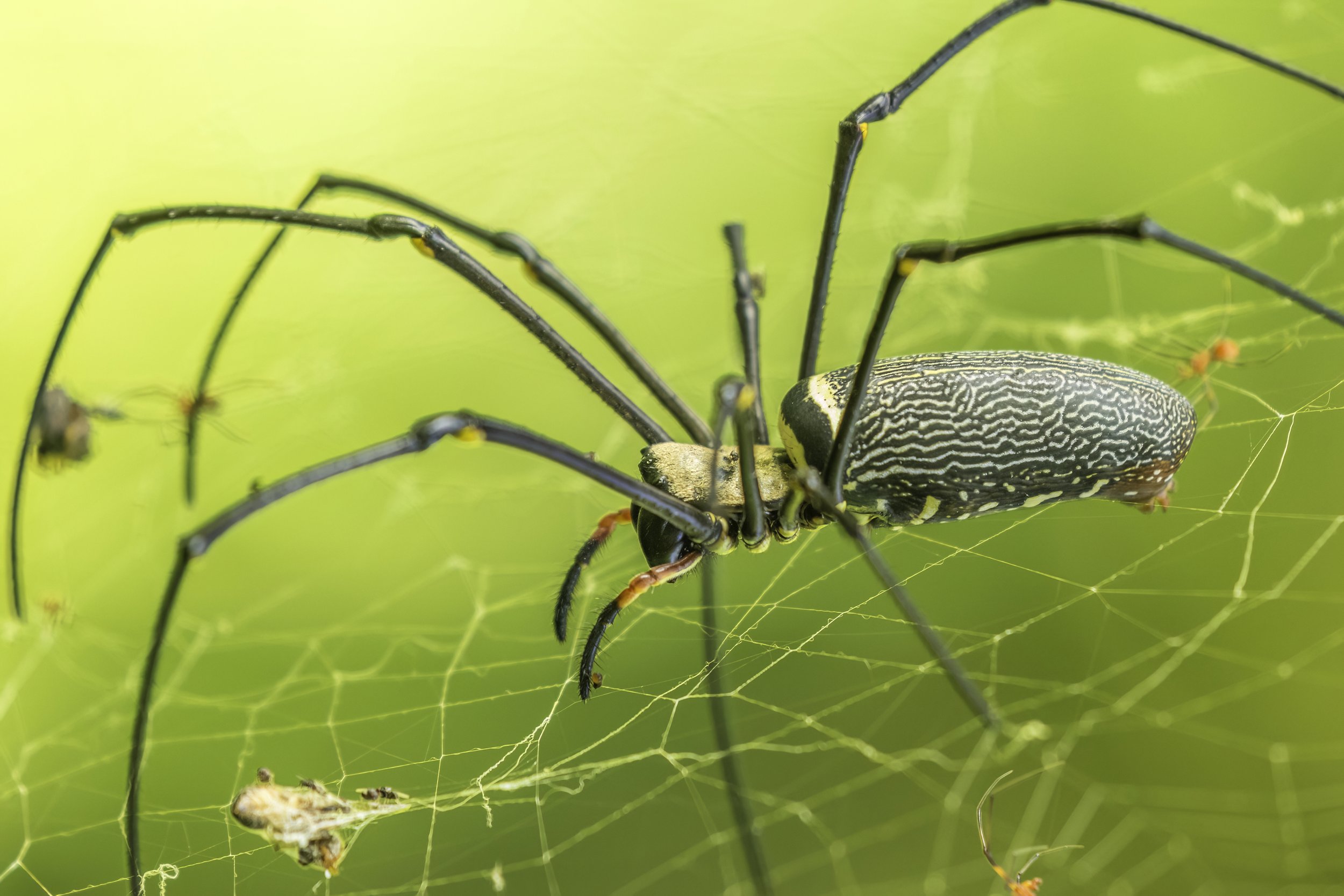Common Greenshank
A gentle-eyed large wader with a slightly upturned bill, overall grayish plumage, a white belly and greenish legs. In flight, appears dark above with a broad white stripe up the middle of the back. Slightly larger and lankier than the Common Redshank. Usually seen as singles or small groups. Feeds mainly by striding in water, picking and sweeping with its bill. Breeds across northern Europe and Asia; migrants and wintering birds in Africa, southern Asia and Australia occur in varied wetland habitats.
#wildartworks #canon #Wildlife #wildlifephotography #sungeibulohwetlandreserve #conservationphotography #wildlifeonearth #planet_untamed_magazine #bbcearth #natgeowild #wetlands #marshlands #commongreenshank #greenshank #wader #Tringanebularia
Stork-billed Kingfisher
A massive tree kingfisher widely but sparsely distributed in the tropical Indian subcontinent and Southeast Asia. It sports a large scarlet bill, olive-brown head with dark green-blue upperparts & buff underparts. Its regular contact call is a loud laughing “ka-ka-ka” repeated 6-10 times. It prefers large streams, rivers, and the edges of large water bodies with vegetated banks.
#wildartworks, #Canon, #PromediagearTR424L, #Bird, #Birdinginthewild, #BirdWatching, #Wildlife, #WildBirds, #naturephotography, #your_best_birds, #planetbirds, #earthcapture, #photo_pond, #earthpix, #naturyst, #conservationphotography, #wildlifeonearth, #bbcearth, #natgeowild, #natgeoindia, #animalsofinstagram, @globalcapture, #singapore, #storkbilledkingfisher, #kingfisher, #treekingfisher, #sungeibulohwetlands,
Red Junglefowl
This “original chicken” is smaller than its domestic descendants, and is widespread throughout South & Southeast Asia and can also be found as an introduced species in many regions around the world (especially prevalent on many Pacific Islands, including Hawaii). In its introduced range and some areas of its native range it has interbred widely with feral and domestic chickens, producing intermediate hybrids. Many of these birds cannot be distinguished from genuine wild-type birds. Within native range calls are useful for ID: the wild male’s crowing is hoarse and choked off towards the end, unlike the loud, vibrant calls of the domestic rooster.
#wildartworks, #wildlifephotography, #jungle, #Wild, #forest, #Wildlife, #conservationphotography, #wildlifeonearth, #bbcearth, #natgeowild, #natgeoindia, #windsornaturetrail, #Kabini, #pench, #Tadoba, #tipeshwar, #BishanAngMoKio, #KaengKrachan, #redJunglefowl, #junglefowl, #fowl, #pheasant,
Collared Kingfisher
The Collared Kingfisher (Todiramphus chloris) is a medium-sized kingfisher belonging to the subfamily Halcyoninae, the tree kingfishers. It is also known as the white-collared kingfisher, black-masked kingfisher or mangrove kingfisher. It has a wide range extending from the Red Sea across southern Asia to Polynesia.
#wildartworks, #Canon, #PromediagearTR424L, #Bird, #Birdinginthewild, #BirdWatching, #Wildlife, #WildBirds, #naturephotography, #your_best_birds, #planetbirds, #earthcapture, #photo_pond, #earthpix, #naturyst, #conservationphotography, #wildlifeonearth, #bbcearth, #natgeowild, #natgeoindia, #animalsofinstagram, @globalcapture, #singapore, #collaredkingfisher, #kingfisher, #whitecollaredkingfisher, #blackmaskedkingfisher, #mangrovekingfisher,
Giant Golden Orb Weaver/ Giant Wood Spider
Nephila is a genus of araneomorph spiders noted for the impressive webs they weave. Nephila consists of numerous species found in warmer regions around the world, although some species formerly included in the genus have been moved to Trichonephila. The name Giant Wood Spider is used to refer mainly to Nephila pilipes, which is very often seen, owing to its size and needless to say the size of its web. This is a common spider in the jungles of peninsular India, where webs built across large open spaces (and at times spanning up to 2 meters) are not uncommon. They are also called the Giant Golden Orb Weaver. Often, the webs of all these Golden Orb Weavers are inhabited by kleptoparasites. As a group, they also exhibit extreme male dwarfism and female gigantism.
#wildartworks, #Canon, #Wildlife, #naturephotography, #earthcapture, #earthpix, #naturyst, #conservationphotography, #yesbbcearth, #indian_wildlifes, #indianwildlifeofficial, #wildlifeonearth, #bbcearth, #natgeowild, #natgeoindia, @globalcapture, #giantwoodspider, #goldenorbweaver, #giantgoldenorbweaver, #nephilapilipes, #nephila, #spider, #woodspider, #goldensilkorbweavers, #goldenorbweavers, #giantwoodspiders, #banana spiders,
Blue-tailed Bee-eater
The blue-tailed bee-eater (Merops philippinus) is a near passerine bird in the bee-eater family Meropidae. It is widely distributed across South and Southeast Asia where many populations are strongly migratory, and seen seasonally in many parts but breeding colonially in small areas across their range, mostly in river valleys, where they nest by tunnelling into loamy sand banks. They are seen mostly in open habitats close to water.
#wildartworks, #Canon, #Bird, #Birdinginthewild, #BirdWatching, #Wildlife, #WildBirds, #naturephotography, #your_best_birds, #planetbirds, #earthcapture, #photo_pond, #earthpix, #naturyst, #conservationphotography, #yesbbcearth, #indian_wildlifes, #indianwildlifeofficial, #wildlifeonearth, #bbcearth, #natgeowild, #natgeoindia, @globalcapture, #bluetailedbeeeater, #beeeater, #TelanganaBirds, #ammavaripetacheruvu, #ammavaripeta, #warangalbirding, #loronghalus, #singaporebirds, #singaporebirding,
Black-naped Oriole
The black-naped oriole is a passerine bird in the oriole family that is found in many parts of Asia. A typical yellow and black Old World oriole, the male is entirely golden-yellow apart from black wings & tail and a broad black band through the eyes. The tail and wings have yellow tips and the bill is deep pinkish. The female is similar to the male but with more yellowish-green upperparts. Juveniles show streaked underparts. They are found in a variety of forest habitats, including plantations and gardens; foraging in the forest canopy. There are several distinctive populations within the wide distribution range of this species and in the past the slender-billed oriole was included as a subspecies.
#wildartworks, #canon, #Birdsinwild, #BirdWatching, #Wildlife, #WildBirds, #naturephotography, #exclusivewildlife, #natgeoindia, #conservationphotography, #indian_wildlifes, #indianwildlifeofficial, #wildlifeonearth, #planet_untamed_magazine, #bbcearth, #natgeowild, #sungeibuloh, #bishanangmokiopark, #indianbirds, #bedokreservoir, #blacknapedoriole, #oriole,
Blue-eared Kingfisher
The Blue-eared Kingfisher is a diminutive dark blue kingfisher with no rufous on the ear-patch. It has an orange spot in front of the eye, white ear tufts on the sides of the neck, and an ultramarine-blue head and neck with darker blue bands giving it a scaly appearance. The upper parts are a glossy dark blue with paler blue central band down the back to the rump. A white chin and throat with deep orange underparts. The males have black bill with brownish-red base, while the females have almost entirely red bill. The juveniles also have dark blue upper parts, but rufous cheeks and ear-coverts similar to the Common Kingfisher. They inhabit well-shaded waterways in forested areas.
#wildartworks, #Canon, #PromediagearTR424L, #Bird, #Birdinginthewild, #BirdWatching, #Wildlife, #WildBirds, #naturephotography, #your_best_birds, #planetbirds, #earthcapture, #photo_pond, #earthpix, #naturyst, #conservationphotography, #wildlifeonearth, #bbcearth, #natgeowild, #natgeoindia, @awpc.hk, #animalsofinstagram, @globalcapture, #blueearedkingfisher, #kingfisher, #Malaysia, #SungaiCongkak, #Congkak, #HuluLangat, #Lanchang, #singapore









